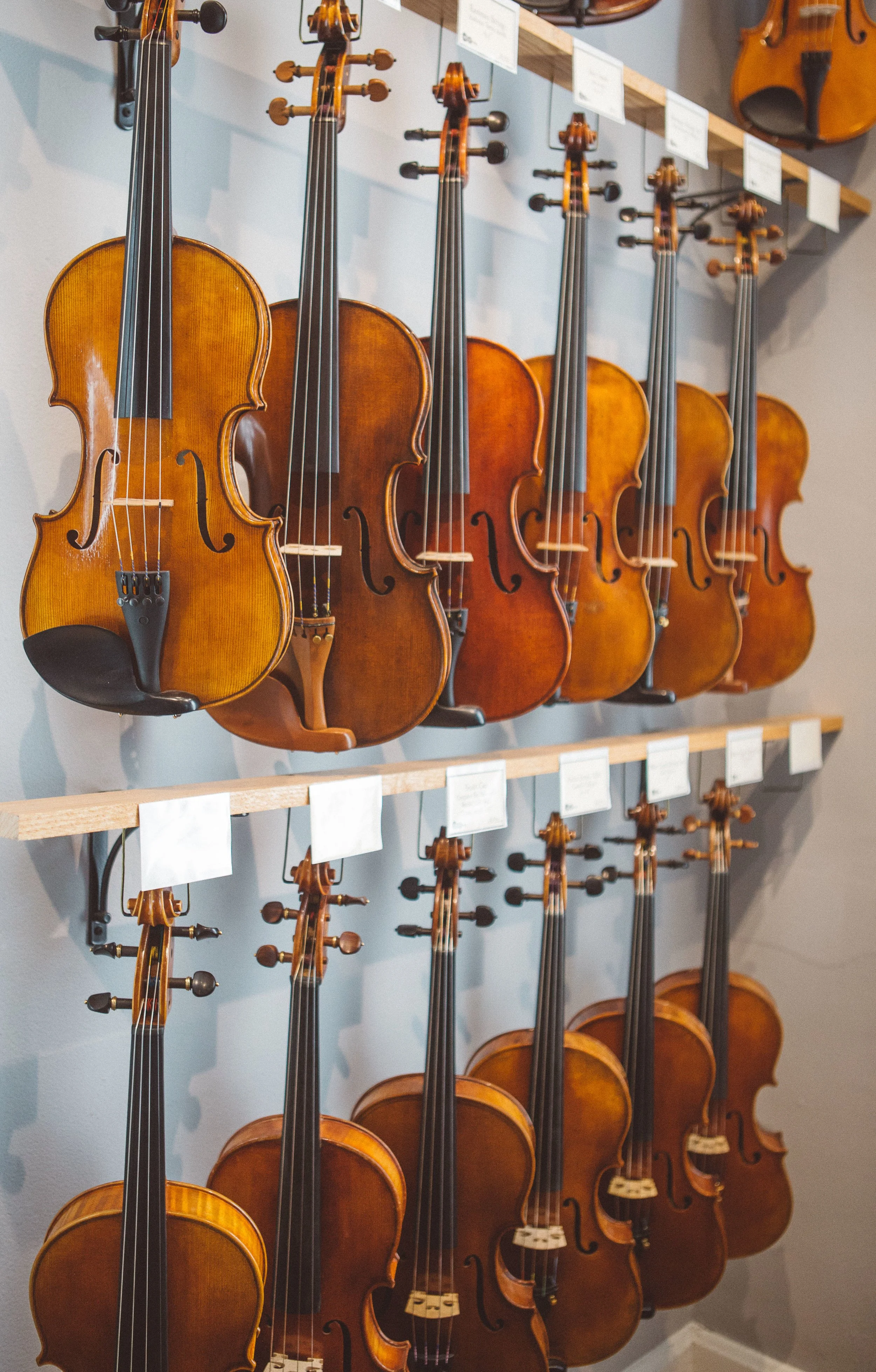BOWS: CARBON FIBER OR WOOD
When it comes to playing the violin, the importance of a quality bow cannot be overstated. As an essential instrument accessory, the bow can greatly affect the tone and overall sound of the violin. In recent years, there has been a growing debate as to whether carbon fiber or wooden bows are the better choice. In this article, I will explore the key differences between carbon fiber and wooden bows to help you make an informed decision when choosing the right bow for your violin. Here are some pros and cons to consider for each option:
Carbon Fiber Bow
Pros
➤ Carbon fiber bows are generally more durable and resistant to changes in temperature and humidity than wooden bows, which can be susceptible to warping or cracking.
➤ They are usually more affordable than wooden bows of comparable quality.
➤ They are generally more consistent in weight and balance, which can make them easier to play for some musicians.
➤ They can produce a bright and focused sound that works well for certain types of music.
Cons
➤ Carbon-fiber bows may not have the same warmth and complexity of sound as a high-quality wooden bow.
➤ Some players may find carbon-fiber bows too light or lacking in "feeling" compared to wooden bows.
➤ While they are generally more durable than wooden bows, they can still break or become damaged with heavy use.



Wooden bow
Pros
➤ Wooden bows are highly regarded for their warmth, complexity and range of tones.
➤ Many professional players prefer wooden bows because they offer more nuanced control over tone and can be more expressive than carbon-fiber bows.
➤ Some players find that wooden bows offer a more natural and comfortable playing experience than carbon-fiber bows.
Cons
➤ Wooden bows can be more expensive than carbon-fiber bows of comparable quality.
➤ They are more susceptible to damage due to changes in temperature and humidity, which can cause warping, cracking and other problems.
➤ The weight and balance of wooden bows can vary more than in carbon fiber bows, which can make it more difficult to find one that feels just right for you.
Types of wood
There are several types of wood that are commonly used in the construction of violin bows:
➤ Pernambuco: considered the finest wood for bows due to its density, flexibility and resonance.
➤ Brazilwood: it has a dense, orange-red color (which takes a high shine), and it is the most frequently used wood for making bows for violins.
➤ Snakewood: a rare and expensive wood with a unique grain pattern and natural resistance to wear and moisture. This wood is used for baroque bows.
➤ Carbon-fiber-reinforced bows: a hybrid design that combines the warmth of wood with the durability and lightness of carbon fiber.
Innovations in wooden bows
Although wooden bows are a traditional choice, they can still benefit from modern innovations and techniques. Some of these include:
➤ Improved frog design: incorporating materials such as silver, gold or ebony to improve grip and balance.
➤ Carbon fiber reinforcement: adding small amounts of carbon fiber to wooden bows to increase strength and reduce warping.
➤ Alternative woods: experimenting with other types of wood such as maple, bamboo or balsa to create lighter and more agile bows.
Care and cleaning tips for wooden bows
➤ Wipe the bow down with a clean, dry cloth after each use to remove rosin buildup and sweat.
➤ Use a mild soap and water solution to clean the bow and wipe dry immediately afterward to prevent warping.
➤ Inspect the bow regularly for cracks, warping or loose fittings and have it repaired immediately by a qualified professional.
➤ Store the bow in a cool, dry place and avoid exposing it to extreme temperatures or humidity.
Multiple bows
It may be a good idea for violinists to own more than one bow. There are several advantages to having multiple bows:
➤ Versatility: different types of bows may be better suited to different playing styles, works of music or performing conditions. For example, a carbon fiber bow may be more durable and resistant to changes in humidity and temperature, making it a good choice for outdoor performances or travel. On the other hand, a wooden bow may offer a warmer and more nuanced sound that is better suited to certain styles of music.
➤ Backup: if your primary bow gets damaged, having a backup bow can be a lifesaver. This is especially important if you are a professional musician.
➤ Practice: having multiple bows can also be helpful for practice sessions. For example, you can use one bow for technical exercises and another for working on expressive playing.
➤ Exploration: experimenting with different bows can be a fun and educational experience, allowing you to discover new sounds and playing techniques.
Of course, owning multiple bows can be expensive, so it’s important to consider your budget and prioritize your needs when making a decision. But for many serious violinists, having more than one bow is a worthwhile investment.
Frequently Asked Questions
-
Traditionally, violin bows have been made of wood, such as pernambuco or brazilwood. In recent years, however, newer materials such as carbon fiber have become more popular.
-
A wooden violin bow tends to offer a warmer and more traditional sound, while a carbon fiber violin bow offers a clearer and more focused tone. In addition, carbon fiber bows are often more durable and less susceptible to changes in humidity than wooden bows.
-
In general, quality wood violin bows tend to be more expensive than quality carbon fiber bows. However, the price of a bow depends on several factors, including its materials, craftsmanship and prestige of the maker or brand.
-
Unlike wooden bows, carbon fiber bows are less susceptible to changes due to humidity or temperature. However, any bow is susceptible to damage from extreme conditions or improper care.
-
Violin bows are typically made by luthiers or bow makers. For wooden bows, the stick is carved from a single piece of wood and fitted with a tip, frog and winding. Carbon fiber bows are made from a composite material that is molded into shape and then finished by hand.
-
The most common woods used for violin bows are pernambuco, brazilwood and snakewood. Each type of wood has its own unique characteristics and is prized for its quality.
-
That depends on personal preference, playing style and other factors. Some violinists prefer the warmth and resonance of wooden bows, while others appreciate the durability and clarity of carbon fiber bows.
-
Yes, high quality carbon fiber bows can offer a similarly rich and nuanced sound as wood bows. However, each bow is unique, so it’s important to find the right bow for your playing style and instrument.
-
A hybrid violin bow is a bow that combines the materials of wood and carbon fiber. These bows typically have a wooden stick with a carbon fiber frog or other components.
Read more articles
Quick video tips
““It may be a good idea for violinists to own more than one bow. There are several advantages to having multiple bows.” ”




























